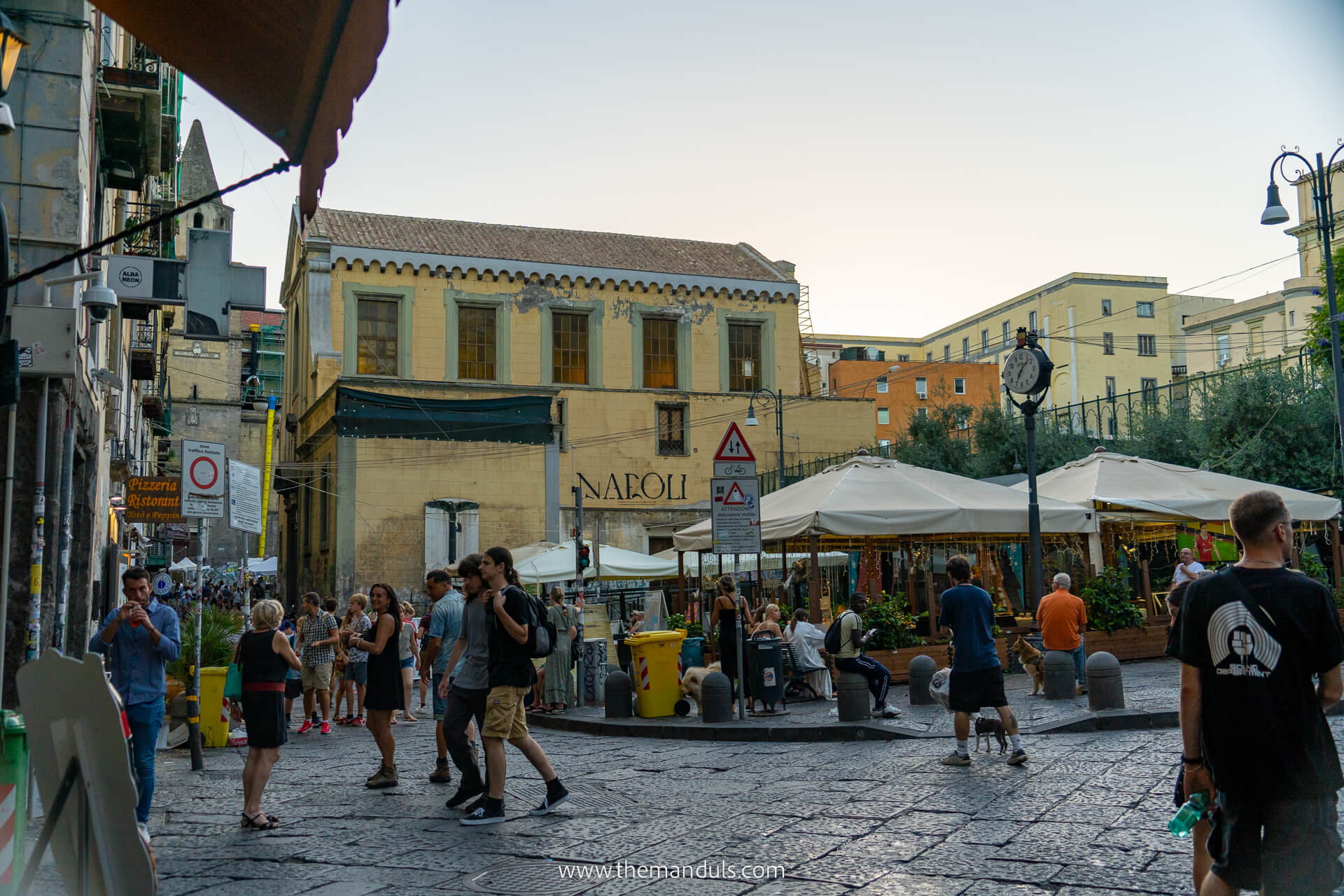This article contains affiliate links. Learn more in our affiliate disclosure.
Naples can feel intense when you first arrive — scooters weaving through narrow lanes, busy piazzas, and a vibe that never really slows down.
We stayed in the historic center on our last visit, so we mostly walked everywhere, and honestly, that was the easiest way to explore the main sights.
Whenever we wanted to go farther — like the waterfront or Vomero — we jumped on the metro. It’s fast and reliable, even though buying tickets can be a little confusing at first (some machines don’t work, but you can quickly get tickets at the small stalls inside the stations).
For day trips, we relied on trains and buses, and everything ran smoothly. If you’re still planning your itinerary, our best things to do in Naples guide is a great place to start, and if you haven’t booked your base yet, our breakdown of where to stay in Naples will help you choose the right area without overthinking it.
If you want to make the most of your time in the city, we put together this straightforward guide to help you get around Naples easily and avoid the common mistakes most travelers make.
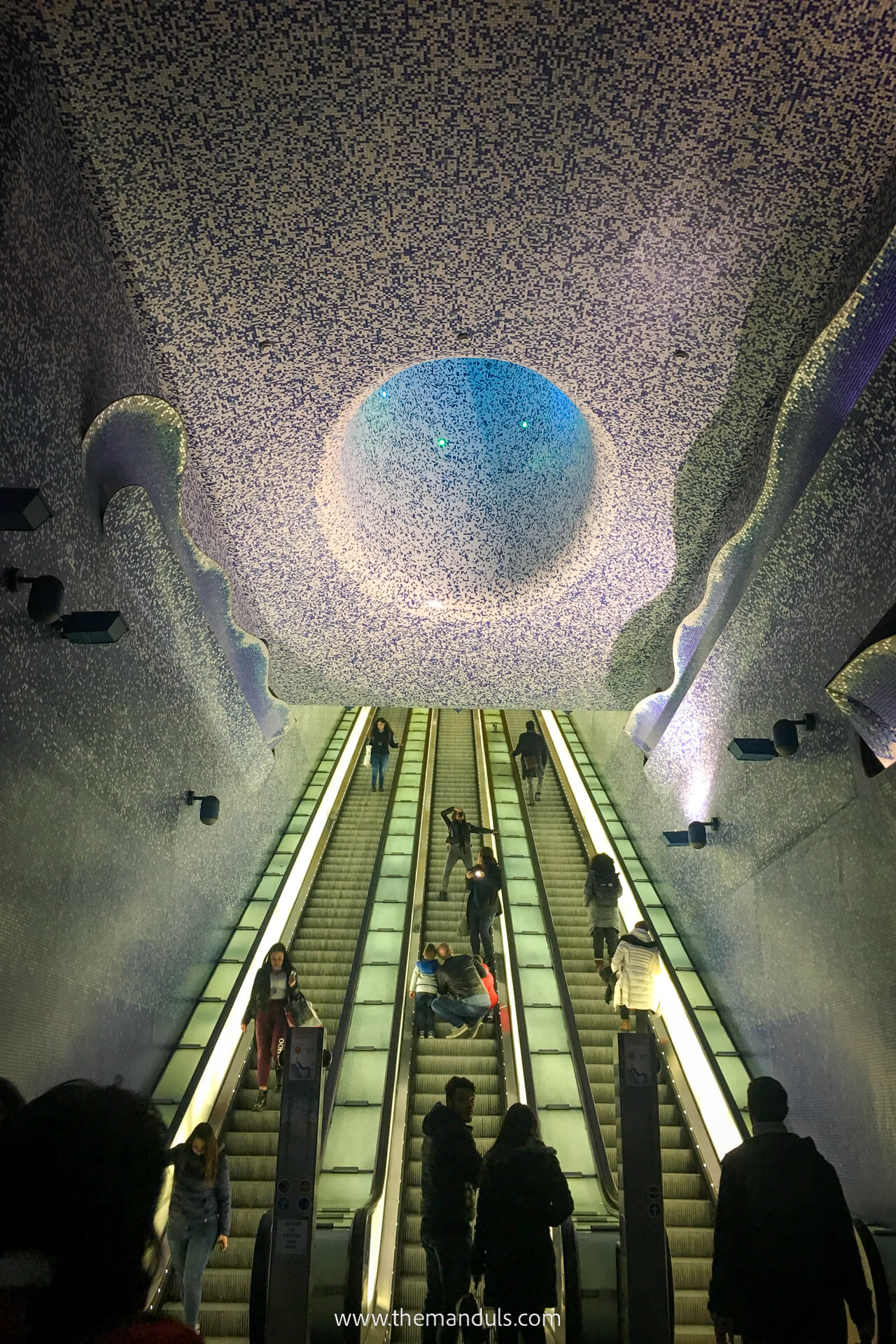
Quick Overview
⭐ Best overall: Walk + metro — easy in the center, fast for longer distances.
⚡ Fastest: Metro — reliable, avoids traffic, and connects most major areas and sights.
🚌 Best backup: Buses & trams — useful when the metro isn’t nearby, but slower during rush hour.
🚖 With luggage or nights: Taxis — straightforward from official stands; FREE NOW app works too.
🚫 Avoid: Driving — ZTL zones + expensive parking.
Is Naples Easy to Get Around?
Yes — as long as you stick to the methods that actually work. The historic center is compact and perfect for exploring on foot, which is why we ended up walking most of the time.
For anything further, the metro is fast, modern, and avoids the worst of the traffic. Buses and trams help fill the gaps, but they’re slower during rush hours. Taxis are reliable when taken from official stands, especially at night or with luggage.
Driving, on the other hand, is the one thing we’d avoid completely — ZTL zones, tight streets, and parking costs make it more stressful than it’s worth.
Overall, once you understand which transport to use for each situation, getting around Naples becomes simple and surprisingly efficient.
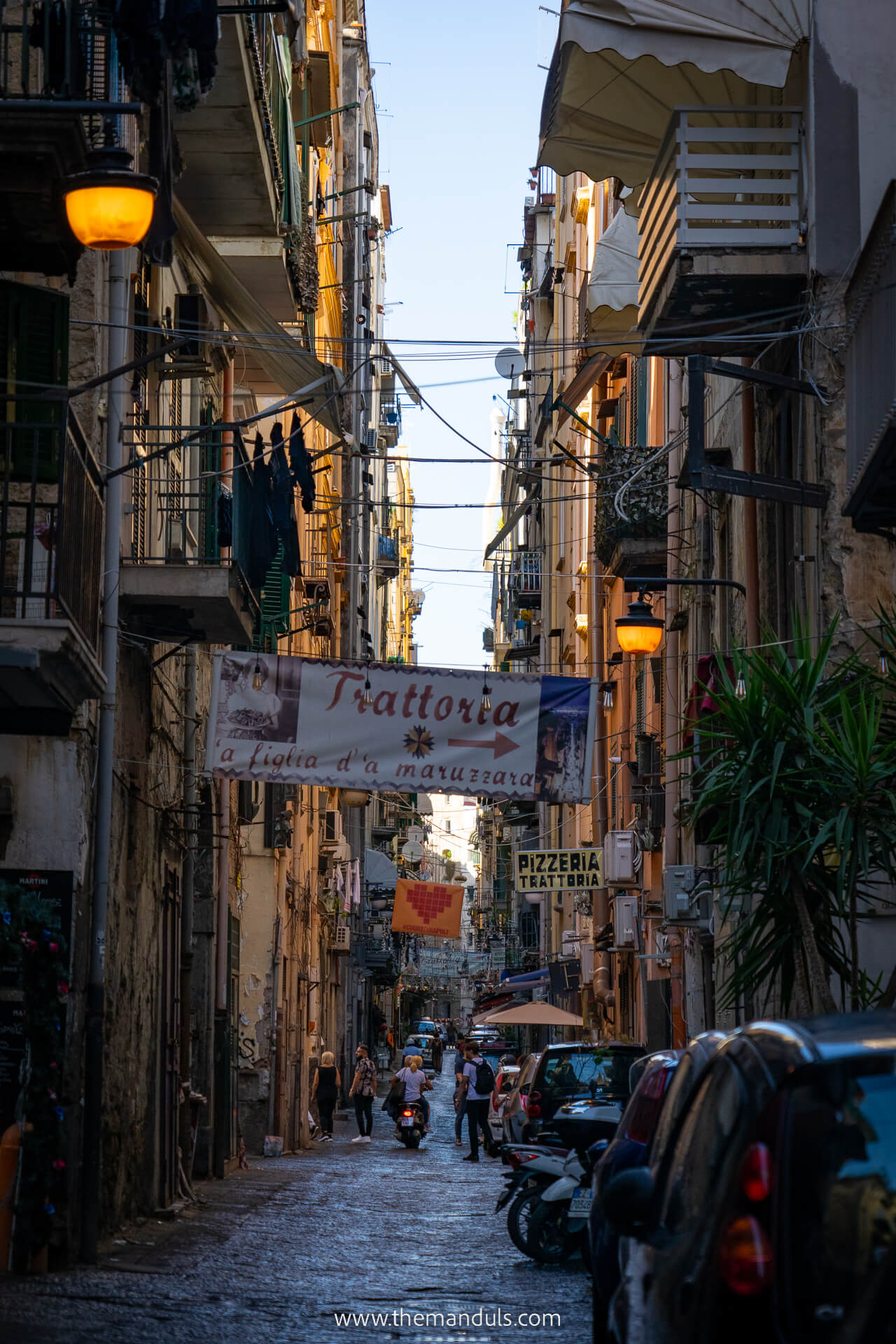
Getting Around Naples: All Transport Options
Naples offers more transport options than you might expect, but they’re not all equal. Walking and the metro will cover 90% of your trip, while buses, regional trains, and taxis fill in the gaps when you need them.
Below, we will explain how each option works in real life, when to use it, and when to skip it — based on our experience.
Walking
Walking is the easiest and most natural way to explore this city, especially if you’re staying in or near the historic center. Most major sights — Spaccanapoli, Piazza del Gesù, Via Toledo, the Duomo — are close together, and the narrow streets are made for wandering, not driving.
We covered most of our trip on foot, and it always felt like the quickest way to get from A to B. Just expect uneven pavements, occasional crowds, and plenty of staircases.
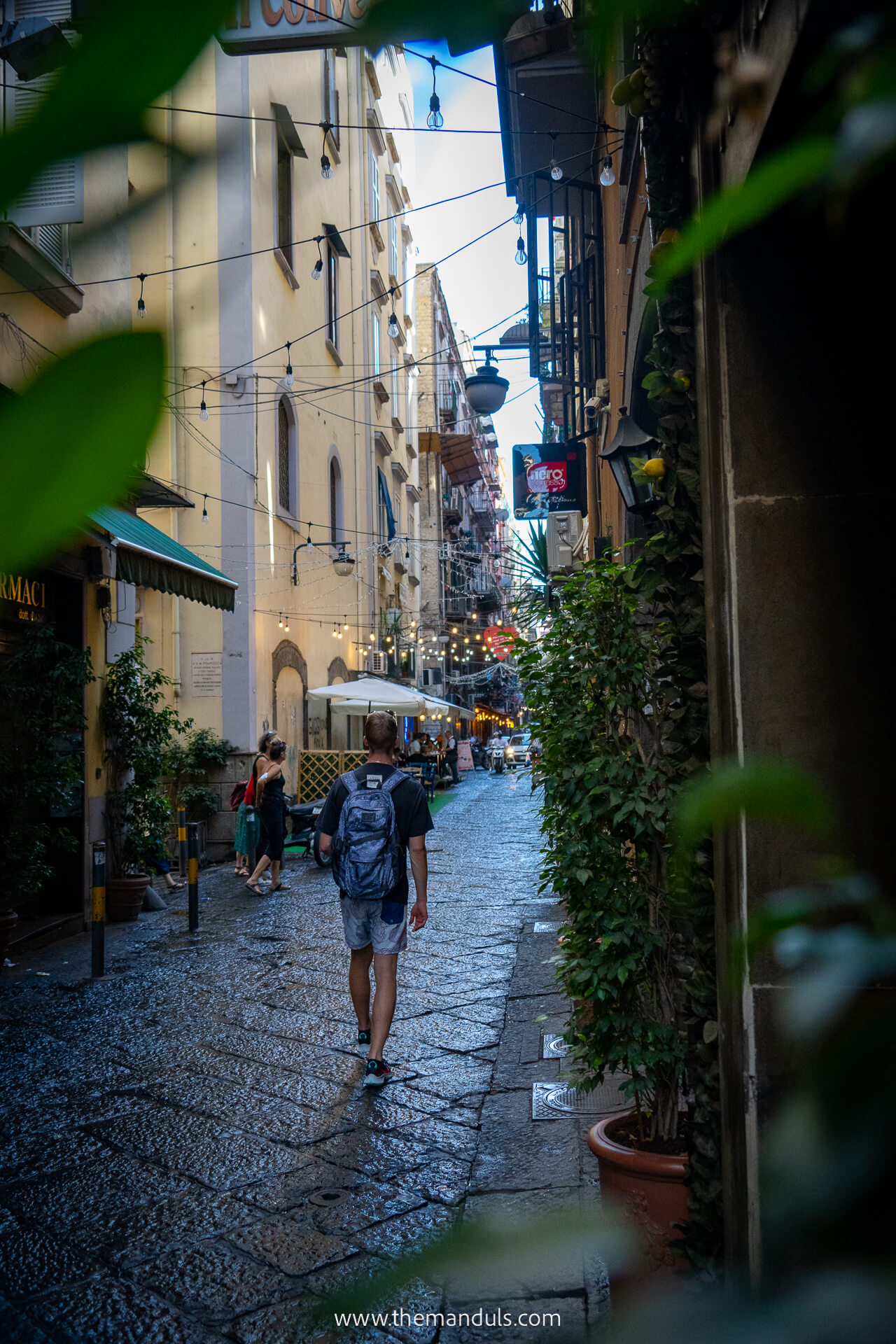
Metro
Ticket Price: from 1.5€ per single ride
The metro is the fastest way to move around Naples and the option we used whenever we wanted to get beyond the historic center.
Line 1 is the line we relied on most — it connects Toledo, Dante, Museo, and Garibaldi (for trains). Stations are clean, modern, and some of them are genuinely worth seeing on their own.
Naples is known for its “Art Stations,” and places like Toledo and Municipio feel more like underground galleries than transport hubs.

Metro runs frequently and avoids all street traffic, so it’s the best choice for longer jumps. The only confusing part is tickets: some machines don’t work, so we sometimes had to buy ours from the little stalls inside the station. If you’re planning several rides, the day pass is often the easiest option.
Use an app like Moovit — it covers metro, bus, and trains in Naples and shows live schedules. Moovit+1 If you’re planning several rides, the day pass is often the easiest option.
Buses & Trams
Ticket Price: from 1.3€ per single ride
Buses cover areas where the metro doesn’t reach, including parts of the waterfront and Vomero. They’re useful, but travel times vary a lot because of heavy traffic, especially during rush hour. Trams along the port are slightly more predictable but still slower than the metro.
We mainly used buses for short, simple connections when the metro wasn’t nearby. For live bus info, stops, and real-time tracking, try Gira Napoli — it’s tailored for the local network of buses, trams, and metro.
Regional Trains
Regional trains are the easiest way to reach Pompeii, Herculaneum, Sorrento, Pozzuoli, and other spots around Vesuvius. Most services leave from Napoli Garibaldi, just below the main station.
Tickets are cheap — they usually start around €2–3 one-way, depending on how far you’re going, and even the longer rides like Sorrento stay very budget-friendly.
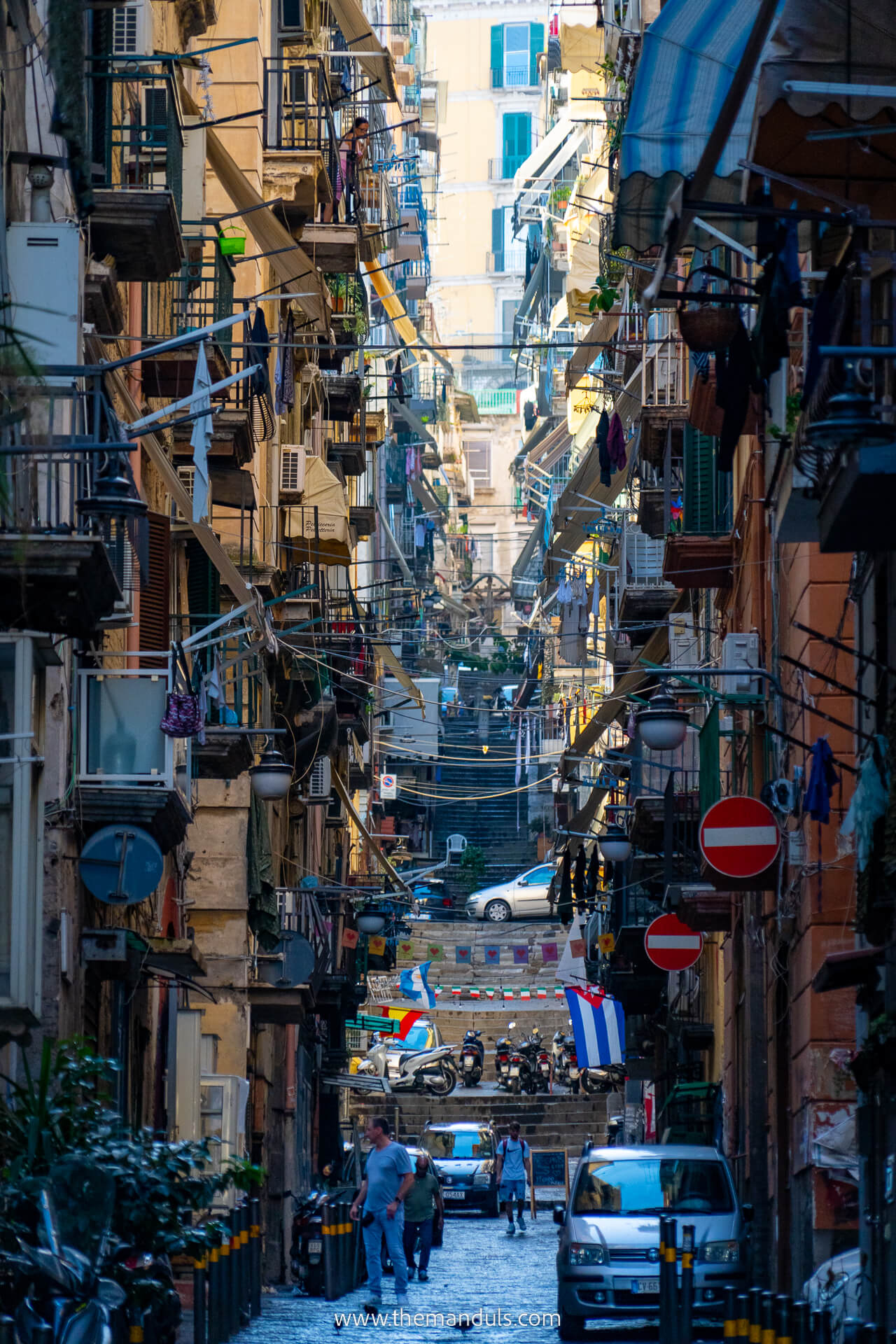
The commuter trains (Circumvesuviana) are basic and can get crowded, but they run frequently and get you exactly where you need to go. If you prefer something more comfortable, the Campania Express is the nicer upgraded version with reserved seats and fewer stops — still affordable and worth it during busy months.
We’ve usually book train and bus tickets with Omio, since it’s easy, convenient, and the prices are the same as at the station or on the official websites. It saves time, especially when you don’t want to deal with long queues or confusing machines.
For day trips, regional trains are by far the smoothest and most reliable option — just check the platform screens, validate your ticket where needed, and you’re good to go.
Taxis & Ride Apps
Taxis in Naples are reliable as long as you use official taxi stands. It’s the easiest option when you’re carrying luggage, arriving late, or just want a smooth ride without dealing with public transport. The city has fixed fares for the airport and several popular areas, so it’s straightforward.
Ride apps aren’t widely used here, but FREE NOW works reasonably well in Naples and is the only app we’d recommend if you prefer booking digitally. Just keep in mind that availability can fluctuate depending on the time of day.
If someone approaches you directly offering a taxi, skip it — licensed drivers never do that in Naples.

Renting a Scooter
Naples looks like a great scooter city, but riding here is not for beginners. Traffic is fast and unpredictable, streets are narrow, and locals drive with confidence — you need to be fully comfortable on a scooter to enjoy it.
If you go for it, choose a reputable rental shop and make sure your international driving licence (if required for your country) is valid.
Parking is definitely easier than with a car, but still be careful: don’t block pedestrian paths and never enter ZTL zones— fines are automatic.
For navigation, Google Maps works well, even in the tighter parts of the city. Overall, unless you already have plenty of scooter experience, public transport is a much easier option.
Renting a Car
Driving inside Naples is something we genuinely wouldn’t recommend — ZTL zones, limited parking, and heavy, unpredictable traffic make it more stressful than useful.
A car only makes sense if you’re leaving the city, for example, toward the Amalfi Coast, Cilento, or a longer Italy road trip.
When we do rent cars, we always book through DiscoverCars. Their full coverage protection is a must if you want real peace of mind — and it’s almost always cheaper than buying insurance directly at the rental desk. We’ve booked with them many times and have never been disappointed.
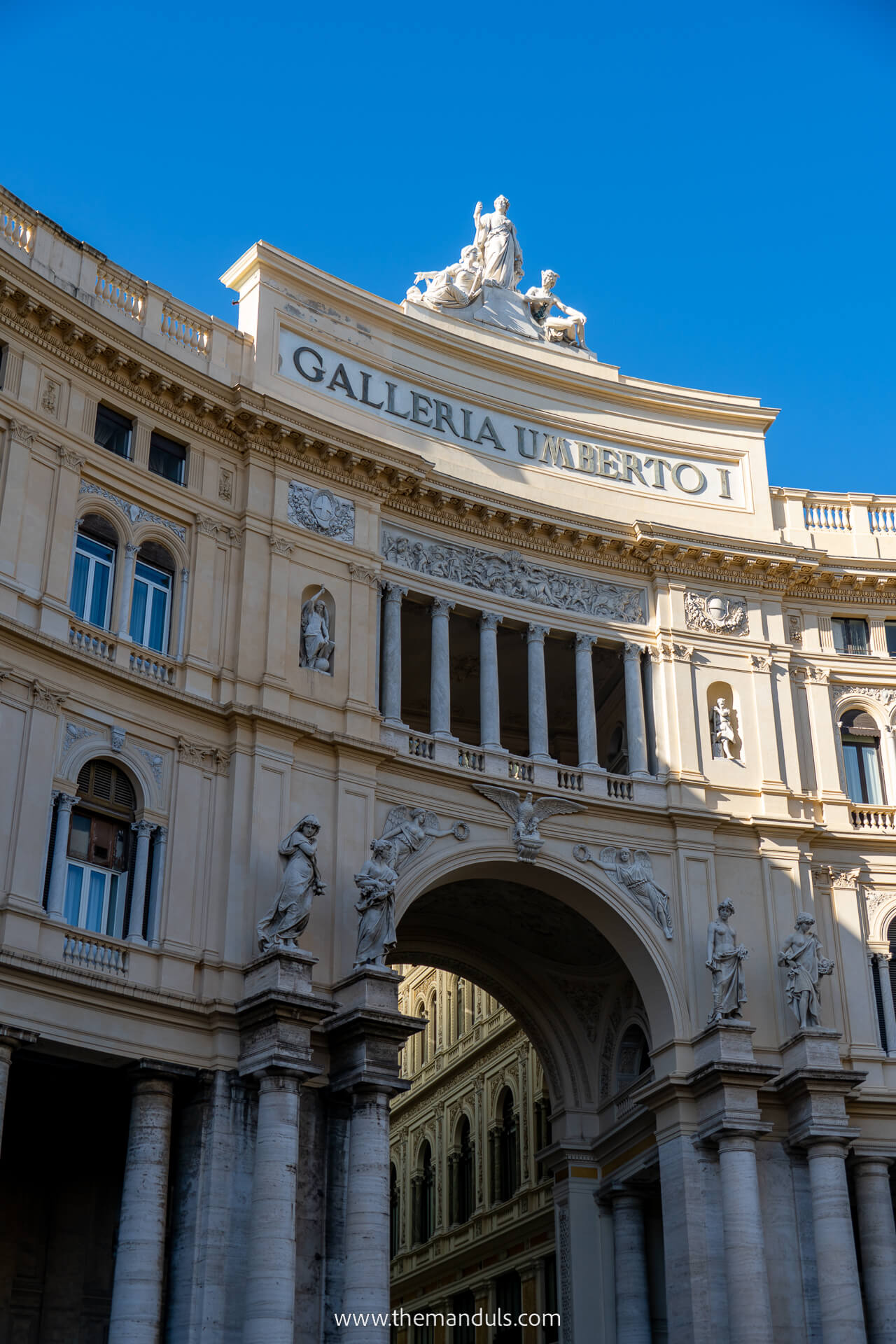
Hop-On Hop-Off Buses
These buses are fine if you want a slow, panoramic loop around the city without thinking too much about transport.
The top deck views are pleasant, but they do get stuck in heavy traffic, which makes them slower than almost every other option. They’re more of a “bonus activity” than a practical way to get around.
Electric Bikes & E-Scooters
You’ll see e-bikes and scooters along the waterfront, and they’re fun. But they’re not practical inside the historic center — the alleys are narrow and crowded, so you’ll spend more time avoiding people than enjoying the ride. Treat them as an optional extra, not your main transport strategy.
Airport Transfers
The Alibus is the easiest and most straightforward way to get from Naples Airport into the city. It runs a direct loop between the airport, Napoli Centrale/Garibaldi (for metro and trains), and Molo Beverello (for ferries to Capri, Ischia and Procida).
Buses usually run every 15–20 minutes and there’s plenty of space for luggage.
A single Alibus ticket costs €5.00 and is valid for one journey. You can buy it:
- on board directly from the driver
- via the automatic ticket machines at the Arrivals terminal exit
- through the ANM GO app for Android/iOS
We like the Alibus because it removes all the guesswork of local buses — you just get on and go. If you want to track the next departure or confirm which stop to use, Moovit helps. And before you travel, always check the first and last departure times here.
For late arrivals, early-morning departures, or when you’re traveling with kids or plenty of luggage, grabbing a taxi from the official airport taxi stand is the simplest option. FREE NOW can work too.
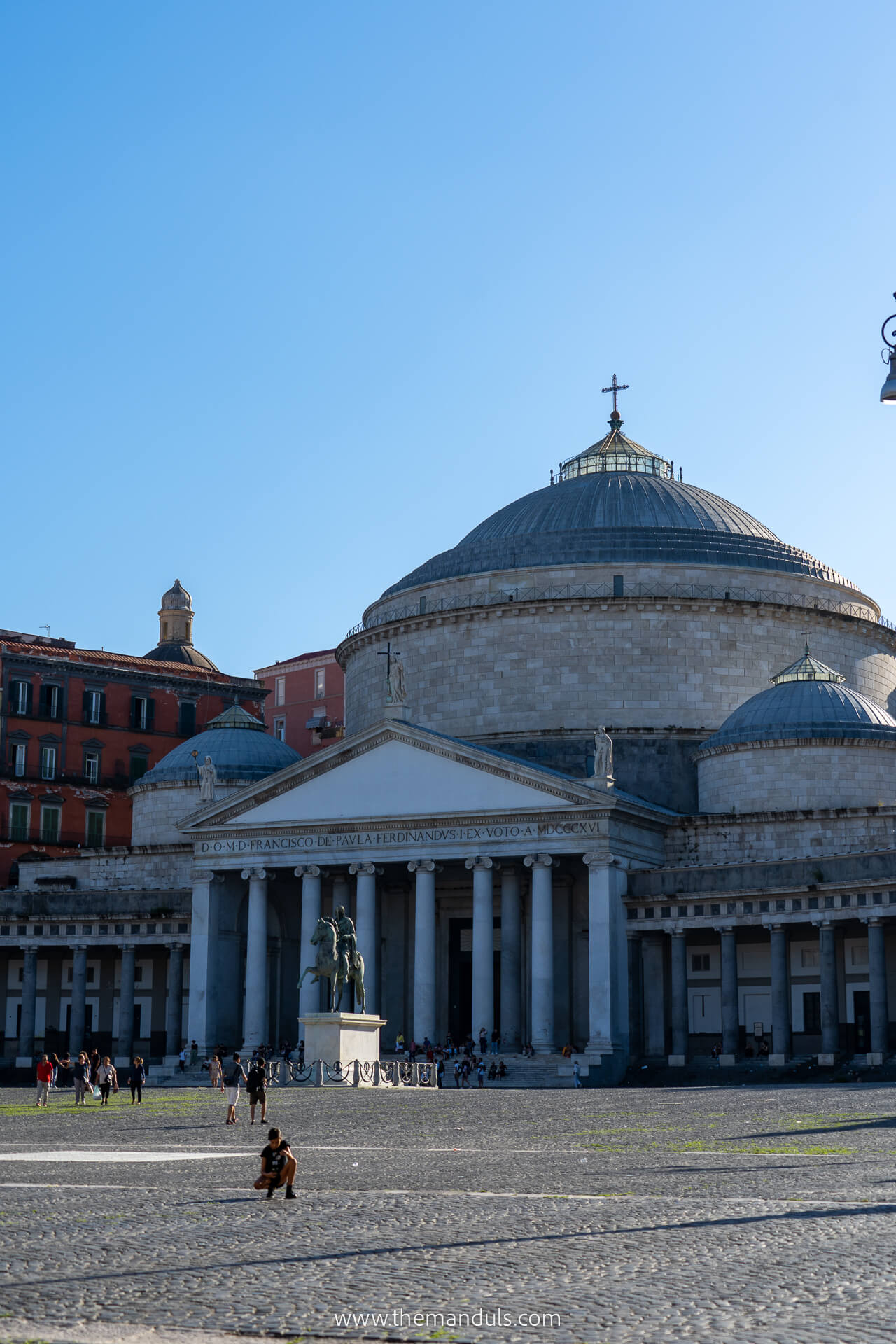
Getting Around Naples With Kids
Naples is doable with kids, but a few things make the experience smoother. The metro is by far the easiest option — stations are spacious, trains run frequently, and it’s much more stroller-friendly than the buses. We’d use it for any longer distance or whenever you want to avoid crowded streets.
Walking works well in the historic center, but expect uneven cobblestones and narrow streets, so a good baby carrier can save the day. Buses are okay for short hops, but they get packed during peak hours, which can be tricky with a stroller.
For airport transfers, evenings, or when you’re carrying extra bags, taxis from the official stands are the most comfortable choice, or book them via the FREE NOW app.
Common Mistakes to Avoid
- Entering a ZTL zone by accident — fines are automatic and very expensive.
- Relying only on buses during rush hour, the metro is much faster and more predictable.
- Getting into unofficial taxis or accepting rides from drivers approaching you directly.
- Underestimating walking distances — the historic center is bigger (and steeper) than it looks on the map.
- Riding scooters with little experience — Naples traffic is not the place to learn.
- Not checking the Alibus first/last departure times, especially for early or late flights.
Final Thoughts
Naples might look chaotic when you first arrive, but once you know what to rely on, getting around becomes surprisingly simple. Walk the historic center, use the metro for any longer distances, and rely on taxis when comfort or luggage makes things easier.
For day trips, the regional trains are straightforward and still the best way to reach Pompeii, Herculaneum or Sorrento without stress.
Stick to this mix and you’ll save a lot of time, avoid the common mistakes, and experience Naples in a much smoother and more enjoyable way — without getting lost in the chaos.

